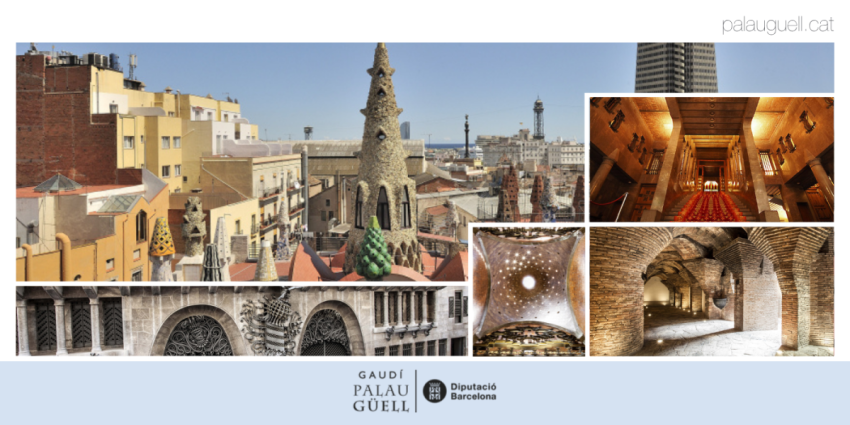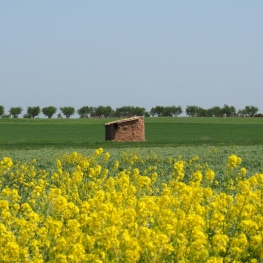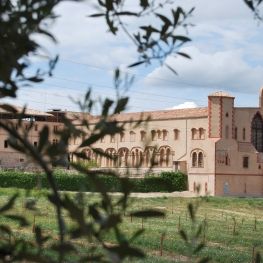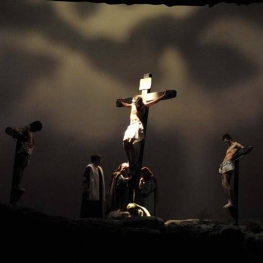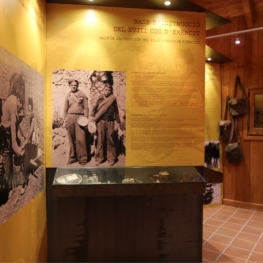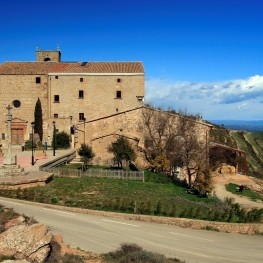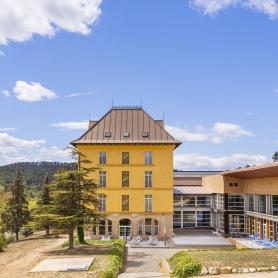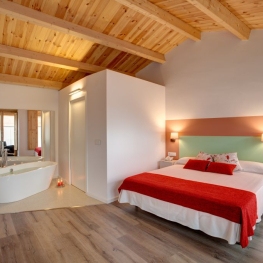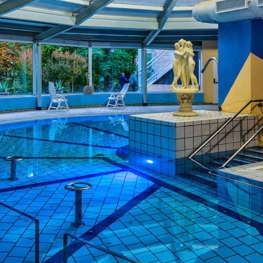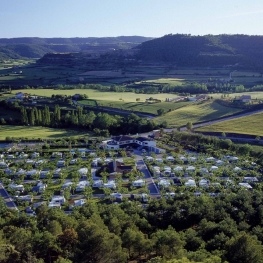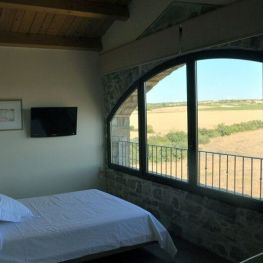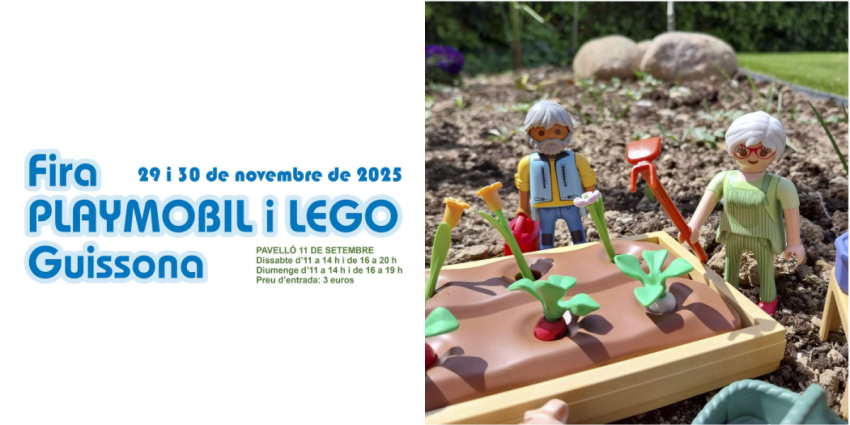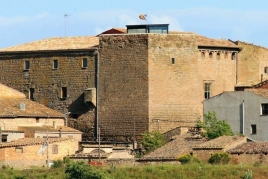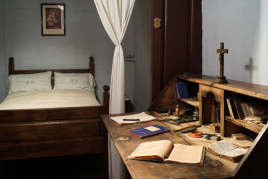La Segarra, land of castles
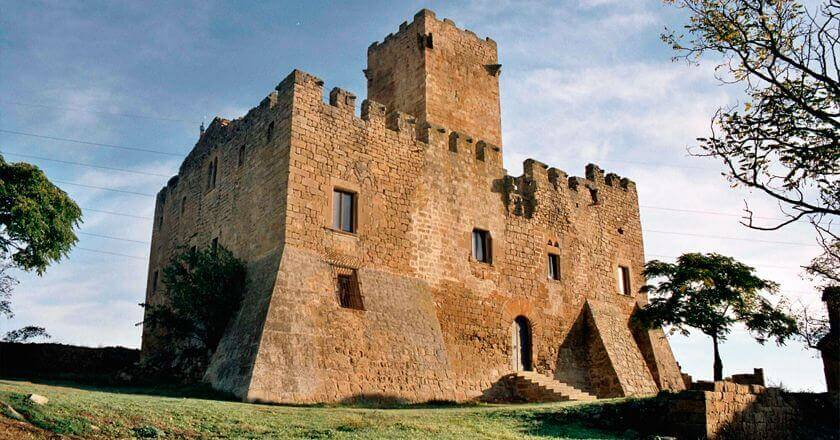
The region of La Segarra is known as the "land of castles" due to the large number of fortifications that rise up. In the XI-XII centuries in this place, crossed by the Sió river valley, the border between the Christian Catalan counties and the Arab Al-Andalus was drawn. This fact turned this area into an insecure space with strong defensive needs.
Once the border disappeared, the castles lost their defensive function and most became stately homes, headquarters of feudalism that continued until the 19th century. Much of this heritage has survived to the present day, becoming a witness to the history of the region and the country. On this route we will visit the most significant ones.
To see the first castles we will go to the municipality of Els Plans de Sió, in all its municipal area there are several fortifications, we will start with Concabella, located in the nucleus of the same name.
Castle of Concabella
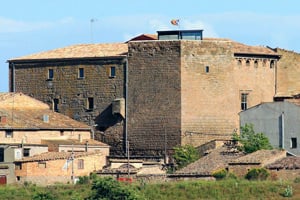 This construction is the main point of reference for the route of the castles since, inside, is the interpretation center for this route. The oldest documents attest to the existence of this castle since the year 1040. In its beginnings it was a defense tower that, over time, was enlarged until it became a castle. Over the centuries various reforms were carried out, but the most important was in the 16th century, at which time the old border had already disappeared and the castle had already lost its old defensive function, becoming a large stately palace in the Renaissance style. that denoted the good economic moment that the noble families lived.
This construction is the main point of reference for the route of the castles since, inside, is the interpretation center for this route. The oldest documents attest to the existence of this castle since the year 1040. In its beginnings it was a defense tower that, over time, was enlarged until it became a castle. Over the centuries various reforms were carried out, but the most important was in the 16th century, at which time the old border had already disappeared and the castle had already lost its old defensive function, becoming a large stately palace in the Renaissance style. that denoted the good economic moment that the noble families lived.
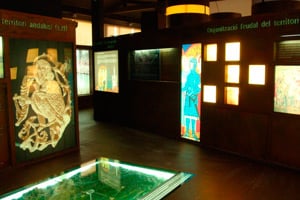 Starting in the 19th century, once the old stately regime had disappeared, the castle was acquired by the residents of Concabella. From that moment some of its stones were used for other constructions, the interior of the castle housed private homes, corrals, a show room, a cafe or a school. All these changes were disfiguring the castle, so it lost the characteristic style it had as a stately palace. Within this long history of functions, the fact that it became a prison during the Civil War (1936-1939) stands out, housing prisoners who were used to carry out the fortification works of the Republican rearguard.
Starting in the 19th century, once the old stately regime had disappeared, the castle was acquired by the residents of Concabella. From that moment some of its stones were used for other constructions, the interior of the castle housed private homes, corrals, a show room, a cafe or a school. All these changes were disfiguring the castle, so it lost the characteristic style it had as a stately palace. Within this long history of functions, the fact that it became a prison during the Civil War (1936-1939) stands out, housing prisoners who were used to carry out the fortification works of the Republican rearguard.
In 1991, the City Council decides to stop the degradation process and begins the reconstruction. This change also brings new uses, today the castle is the venue for several exhibitions related to La Segarra and its surroundings, one of the most important exhibition spaces is the Sió Castles Interpretation Center, so called because a large part of the castles They are found around the Sió river valley. This interpretation center explains the historical context and the way in which the castles in this area were built. On the other hand, there is also the Manuel de Pedrolo Space dedicated to this writer from La Segarra who was born in the Aranyó castle, very close to Concabella. Finally, you can also visit an exhibition dedicated to explaining the entire ecosystem of flora and fauna of the dryland landscape typical of the lands of Lleida.
Pallargues Castle
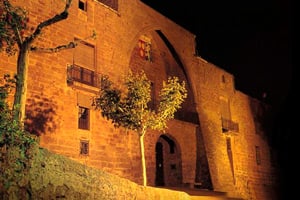 In the same municipality of Els Plans de Sió we will find the castle of Pallargues, in the nucleus of the same name. This fortification is one of those that is still used today as a home, although it has been owned by several families, for a hundred years it has been owned by the Roviras, they still live and are in charge of making the tourist visits that take place in inside the castle.
In the same municipality of Els Plans de Sió we will find the castle of Pallargues, in the nucleus of the same name. This fortification is one of those that is still used today as a home, although it has been owned by several families, for a hundred years it has been owned by the Roviras, they still live and are in charge of making the tourist visits that take place in inside the castle.
The most outstanding element of the construction is the main façade, dominated by a large Gothic arch thirteen meters high and seven and a half meters wide. Under this arch today there is a large balcony and the entrance to the building.
The oldest reference to the castle dates from the year 1061, it was built in a strategic and elevated point next to the Sió river. Over the centuries, around it, the nucleus of Les Pallargues was formed. Its interior has the appearance of a stately castle-palace that many of the old castles of La Segarra have. Noble spaces stand out such as the Chapter House or the spiral staircase that leads to the dungeons and the ice well, the chapel of San Miguel, the old bedroom and the terrace with privileged views of La Segarra.
Castle of Montcortes
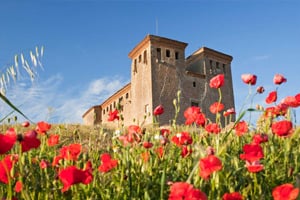 To finish the visit to the castles of the municipality of Els Plans de Sió we will go to the center of Montcortés, made up of some scattered farmhouses. In the highest part of the nucleus is the imposing castle of Montcortés.
To finish the visit to the castles of the municipality of Els Plans de Sió we will go to the center of Montcortés, made up of some scattered farmhouses. In the highest part of the nucleus is the imposing castle of Montcortés.
The building has been known since 1095, in the fifteenth century the current castle was built, a large fortress. Of this three-storey Renaissance-style building, the presence of two large twin towers and the decoration of the windows of what should be the main floor stand out.
The building is currently unused and closed, but it is worth visiting the exterior for its majesty, a monument that dwarfs the country houses that gather around it.
Florejacs Castle
Florejacs is a closed town, that is to say, a walled nucleus of the municipality of Torrefeta and Florejacs whose origin is the castle of the same name. The first news dates back to the 11th century and it was built by Arnau Mir de Tost, a nobleman and military man from the former county of Urgell. The castle, like the others in the area, defended the border between the Arab and Christian worlds. Once the border disappeared, it followed a process similar to that of other defensive constructions, becoming a stately home. Thus, during the 16th century, a new block was added to the medieval defense tower in accordance with the new stately functions of the building. In addition, the lords of the castle promoted the construction of houses inside the walled enclosure, giving life to the current town of Florejacs.
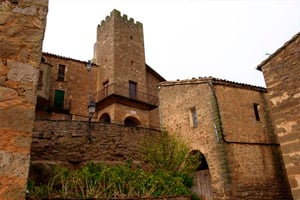
The castle has belonged to the same family for centuries, the Jaumandreu de Balanzó who, even today, use part of the building as a private residence and organize guided tours of the most outstanding spaces inside. Of the castle, built directly on the rock, stands out the 14th century defensive tower, 21 meters high, an element that can be seen from many places around. Inside you can visit different rooms, decorated with a wide collection of antique furniture and objects that the owner family has preserved over the years; You can also visit other more curious spaces such as the old dungeon.
Florejacs castle is the scene of one of the best known legends of La Segarra, a story related to the name of the town and the castle, it is the Lady of the Flowers. Legend has it that a very pretty maiden lived in the castle, her beauty was known and many men came to her residence to see her, so she chose the one she liked the most. But the Lady of the Flowers had a darker side, once she had enjoyed the chosen man, fearful that the news would spread, she made her lover smell a bewitched flower that turned the man into another flower that, later, she planted in the castle garden. Finally, the king found out about this practice and condemned and executed the lady. The legend closes with the story of those who say that, occasionally, the ghost of the Lady can be seen walking through the town with a flower in her hand. It is said that to honor all the men who were victims of the lady's evil arts, the place was renamed Florejacs.
Castle of the Silos
This castle is one of the icons of La Segarra, its exterior appearance makes it special since it is a construction that has the typical appearance of a medieval castle. To get there, leaving Florejacs, we will go towards Palou, until the L-313 road, on this road we will find the detour that leads to the castle that rises, practically alone, on a hill.
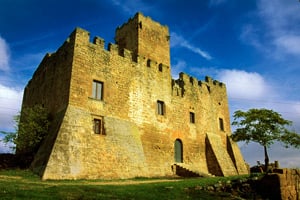 It is square in shape, with a slope that follows the base of the castle walls, crowned with battlements. In the center of the fortification stands a defense tower twenty meters high that crowns the castle. Its origins are the same as those of the castle of Florejacs since this fortification was also promoted by the military Arnau Mir de Tost, with the aim of reinforcing the border between Arabs and Christians.
It is square in shape, with a slope that follows the base of the castle walls, crowned with battlements. In the center of the fortification stands a defense tower twenty meters high that crowns the castle. Its origins are the same as those of the castle of Florejacs since this fortification was also promoted by the military Arnau Mir de Tost, with the aim of reinforcing the border between Arabs and Christians.
Behind the walls of the castle there is a central courtyard, around which the main spaces of the building rise, of an aristocratic nature, in addition to these noble spaces, others such as the cellar, the dungeon, the kitchen, the oven or the stables are preserved. From the top of the central tower that crowns the castle, you can see a panoramic view of the La Segarra region.
Near the castle we find the church of San Pedro de Los Silos, a small Romanesque temple built in the 12th century.
Vallferosa Tower
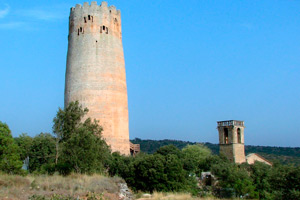 To finish the route we will visit the Vallferosa tower, to get there we will do it from the detour on the LV-3005 road, leaving the core of Torá. This construction is not a castle in itself, simply a watchtower that complemented the defensive strategy of the castles that are built throughout the region.
To finish the route we will visit the Vallferosa tower, to get there we will do it from the detour on the LV-3005 road, leaving the core of Torá. This construction is not a castle in itself, simply a watchtower that complemented the defensive strategy of the castles that are built throughout the region.
The Vallferosa tower, although it is not a castle, is worth a visit as it is considered one of the most interesting defensive constructions of the 10th century in Europe. It is located about 50 meters above the Barranco de los Cuadros. The tower was built around the year 970; In 990 they wanted to reinforce the tower by building a wider and taller one around its perimeter so that the old tower was hidden inside the new one. The tower has been preserved intact and unchanged since it was built, it is circular, 33 meters high, and with loopholes at the top. The gate is located 10 meters high, as was customary in this type of defensive construction. Modernly, a staircase has been built that allows you to reach the height of the door, this element allows you to visit both the interior of the tower and its roof terrace and enjoy good views of the Llobregós river valley. At the foot of the tower are the ruins of the church of San Pedro and the old town of Vallferosa.
Other castles of the Segarra
We finish the route visiting only a part of the castles that are in the region, since there are others that rise from different types of construction, well preserved, in ruins, inhabited, uninhabited or converted to other uses, it must be taken into account that in practically all Every nucleus of La Segarra has a castle or some type of fortification, since a large part of the towns of La Segarra originated from the existence of a castle.
In this way, you can extend the tour of the region by visiting castles such as Vicfred, Aranyo, Castellmeià, Mejanell, Vergós Guerrejat, Molino de Ratera, Les Oluges or also the closed town of Montfalcó Murallat, the Ivorra tower or the Mejanell tower, monuments that, without a doubt, make La Segarra a land of castles.
What to do
Turisme Urgell
(a 13.8 Km)Urgell, an inland region, very accessible and well connected, where you can…
Mas de Colom, Casa Borges
Tàrrega (a 12.2 Km)The former convent and farmhouse are located on the Mas de Colom…
La Passió de Cervera
Cervera (a 9.4 Km)The Passion of Cervera is a theatrical representation of the life, death…
Memorial de l'Exèrcit popular
Pujalt (a 10.7 Km)The People's Army Memorial in Pujalt invites you to discover the history…
Where to eat
Hostal de Pinós
Pinós (a 11.5 Km)It is the oldest restaurant in Catalonia that has never closed its…
Iberik Rocallaura Balneari
Vallbona de les Monges (a 28.8 Km)Iberik Rocallaura Balneari is located on the Cistercian Route, in the municipality…
Where to sleep
Hotel La Freixera
Solsona (a 22.4 Km)Discover Hotel la Freixera, a charming boutique hotel located in the middle…
Hotel Balneari de Vallfogona de Riucorb
Vallfogona de Riucorb (a 21.3 Km)Enjoy the Hotel Balneario de Vallfogona de Riucorb, which has modern facilities…
Càmping el Solsonès
Solsona (a 24.1 Km)Camping El Solsonès offers fully equipped wooden bungalows, a new camping area,…
La Torre del Codina
Tàrrega (a 15.3 Km)The Torre del Codina is located in the municipality of Talladell, municipality…

